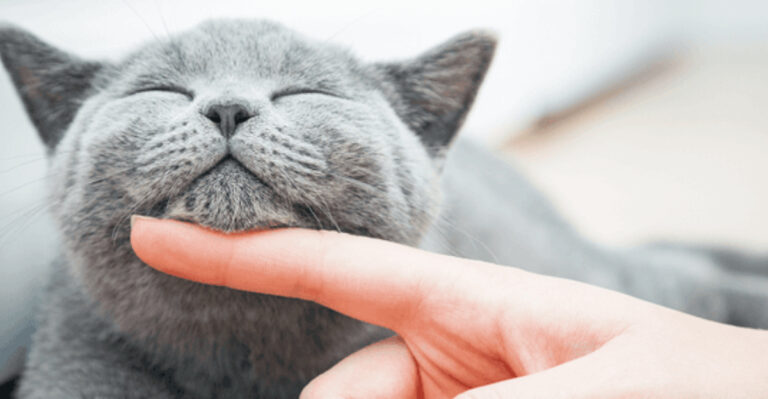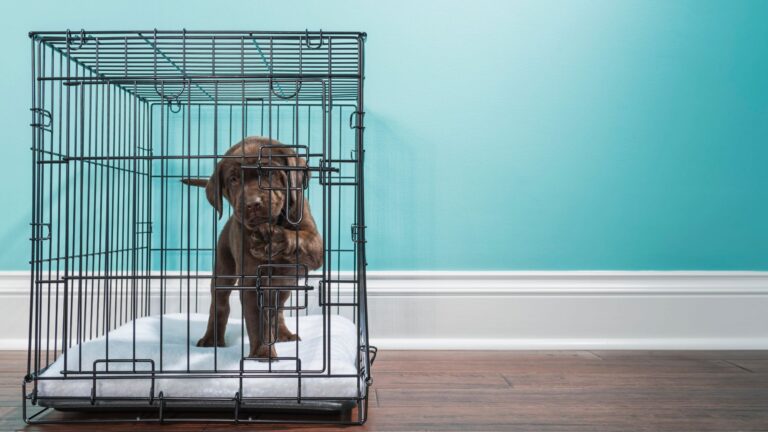14 Easy Ways To Help Your Cat Feel Comfortable Indoors
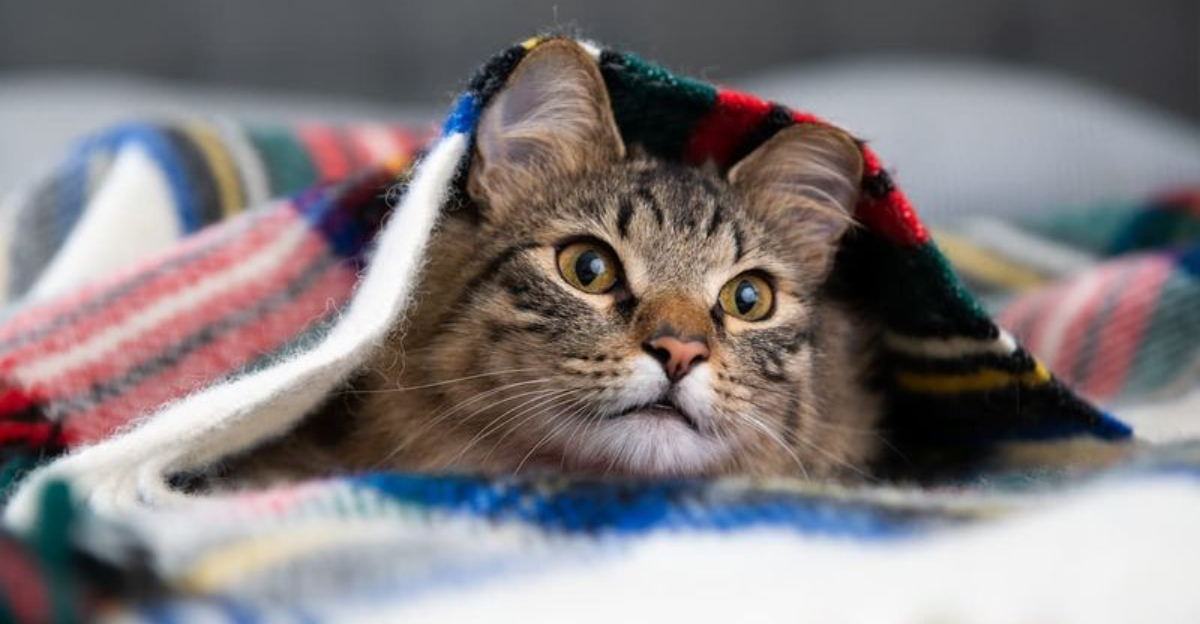
Discover how to create a cozy and stress-free indoor environment for your feline friend with these practical and entertaining tips.
Transitioning your outdoor-loving kitty into an indoor cat can be a smooth process with the right approach.
1. Keep Windows And Doors Secure
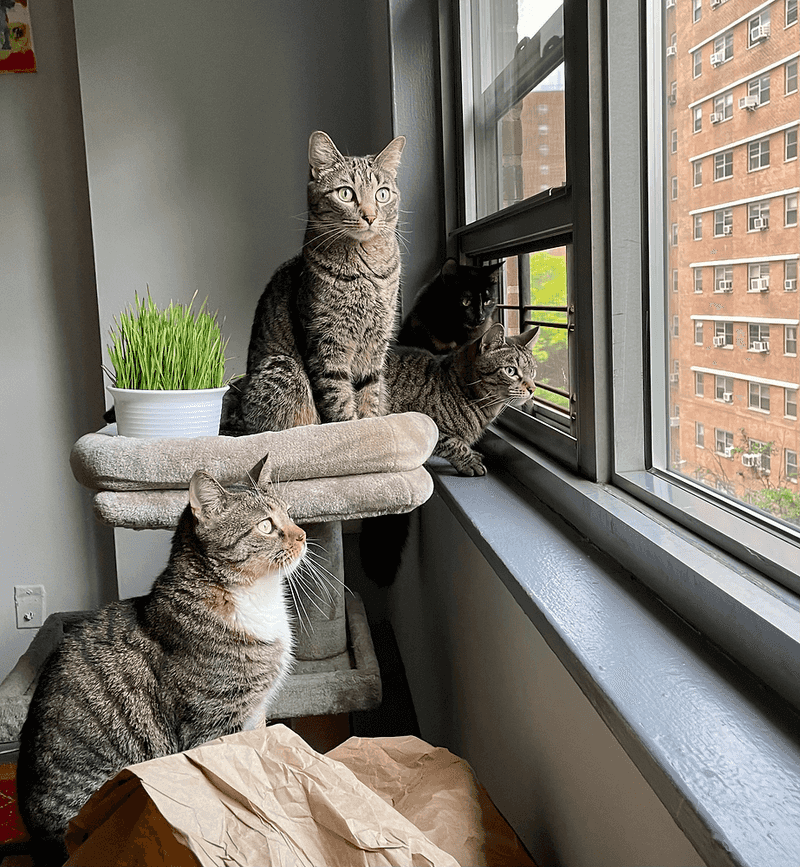
To prevent unexpected feline escapades, ensure all windows and doors are securely locked. Implementing a catio—a safe, outdoor enclosure—can provide your cat with fresh air without the risk of escape.
Cats are inquisitive creatures, often driven by the urge to explore beyond the confines of home, so taking these precautions can satisfy their curiosity while ensuring their safety.
Reinforcing doors with extra locks or screens might also reduce the chances of a sneaky getaway. Keeping them safe indoors is an essential step for peace of mind.
2. Provide Vertical Space
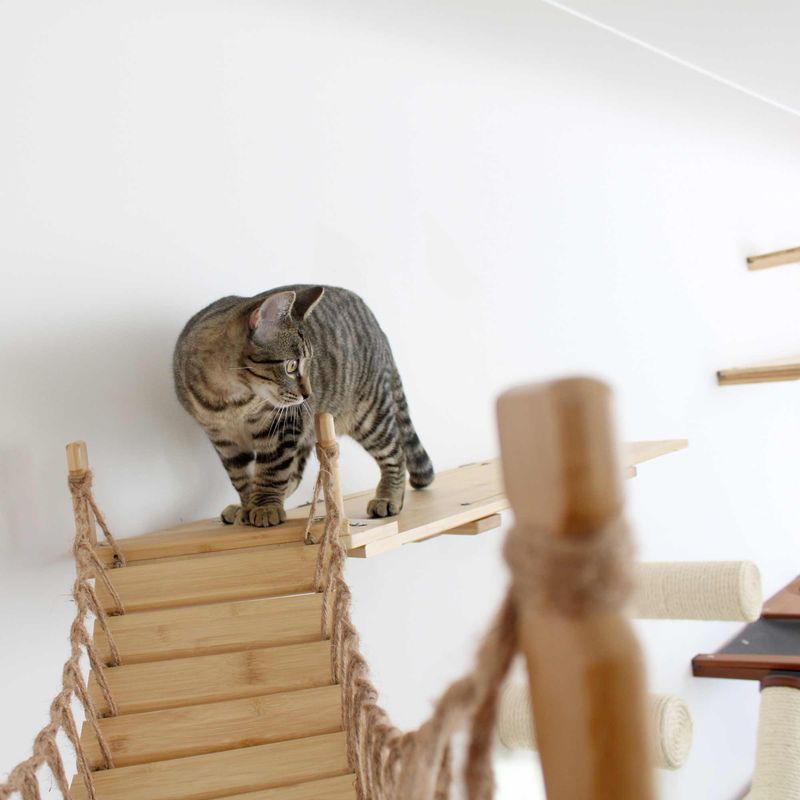
Cats are natural climbers, and creating vertical spaces can turn your home into a playground.
Installing towering cat trees, wall-mounted shelves, or window perches satisfies your cat’s urge to climb and observe their surroundings from a high vantage point.
These elevated areas not only provide entertainment but also a sense of security, as cats enjoy overseeing their domain from on high.
Remember, a satisfied cat often leads to a happy home environment. Vertical exploration is key to keeping them engaged indoors.
3. Use Calming Products
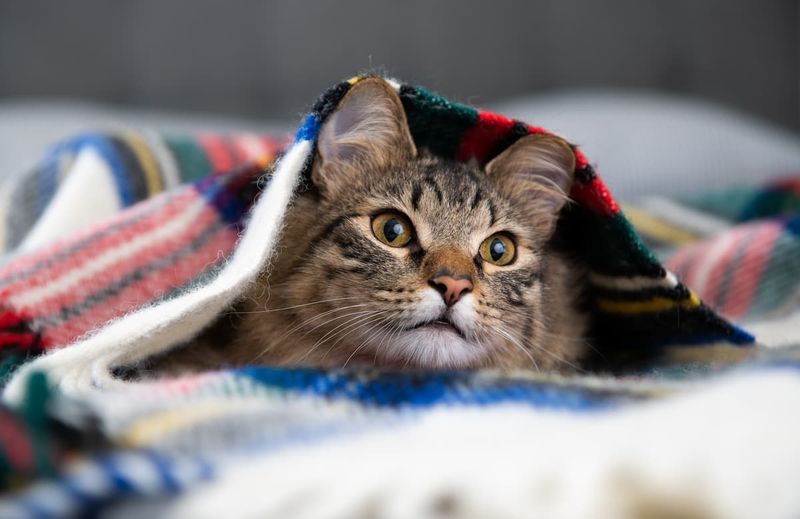
For a smooth indoor transition, consider using calming products like pheromone diffusers, sprays, or collars. These tools are designed to ease anxiety, making your cat more comfortable with their new indoor lifestyle.
The subtle fragrance of a pheromone diffuser can mimic the soothing scent of a mother cat, calming nerves and reducing stress-induced behaviors.
Sprays can be applied to areas your cat frequents, creating a peaceful atmosphere. With the right calming aid, your indoor cat can adjust with minimal fuss.
4. Provide Consistent Routine
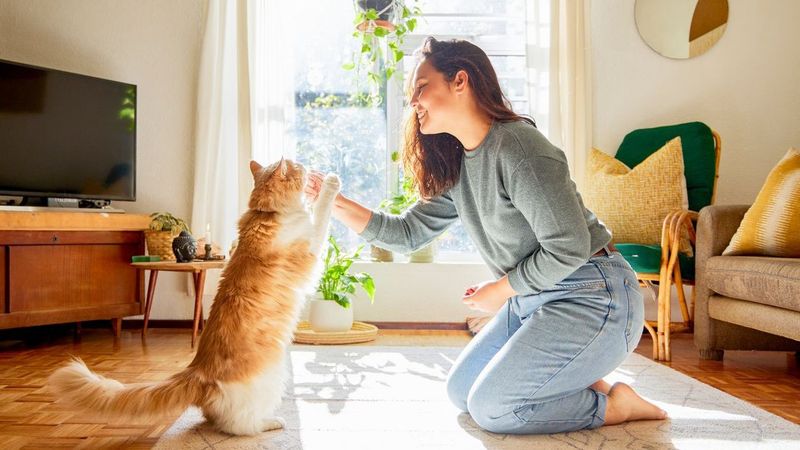
Establishing consistency in your cat’s daily routine can significantly reduce stress levels.
Regular feeding times, combined with scheduled play and rest periods, create a predictable environment that reassures your feline friend.
Cats thrive on predictability, and knowing what to expect each day fosters comfort and confidence.
By aligning your schedule with your cat’s natural rhythms, you can help them adjust more easily to indoor life. A consistent routine is a cornerstone of a relaxed and happy pet.
5. Create A Safe Space
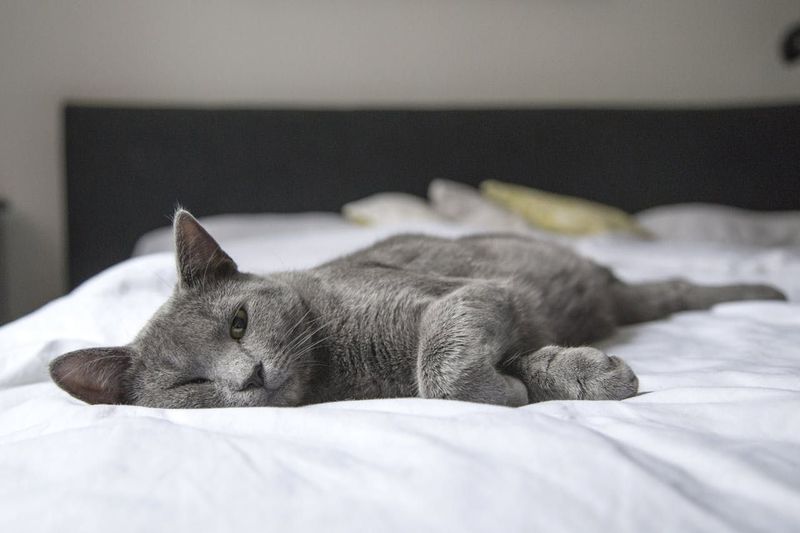
Every cat needs a sanctuary, a private retreat where they can escape the hustle and bustle of daily life. Setting up a quiet, comfortable area with a soft bed and favorite toys offers a haven for relaxation.
This designated safe space can help your cat feel secure, especially during times of stress like thunderstorms or when guests visit.
A safe space is not just a physical area—it’s a mental reassurance for your cat, making indoor life more enjoyable.
6. Gradually Phase Out Outdoor Access
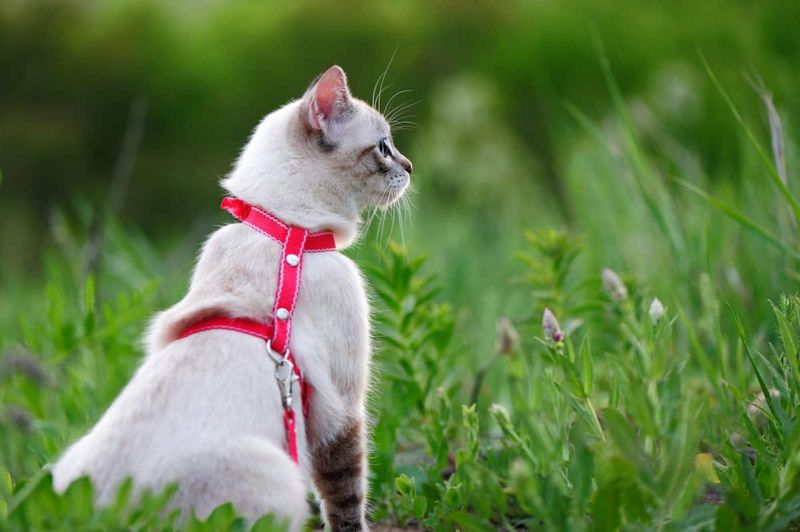
Transforming an outdoor cat into an indoor one requires a gradual approach. Slowly reducing outdoor access while enhancing indoor enrichment ensures a smooth transition.
Engage your cat with stimulating toys, puzzles, and playtime to fill the gap left by their outdoor adventures. This gradual shift helps your cat adapt without feeling confined or bored.
Patience is key, and over time, your cat will begin to associate the indoors with comfort and fun rather than restriction.
7. Offer Plenty Of Playtime
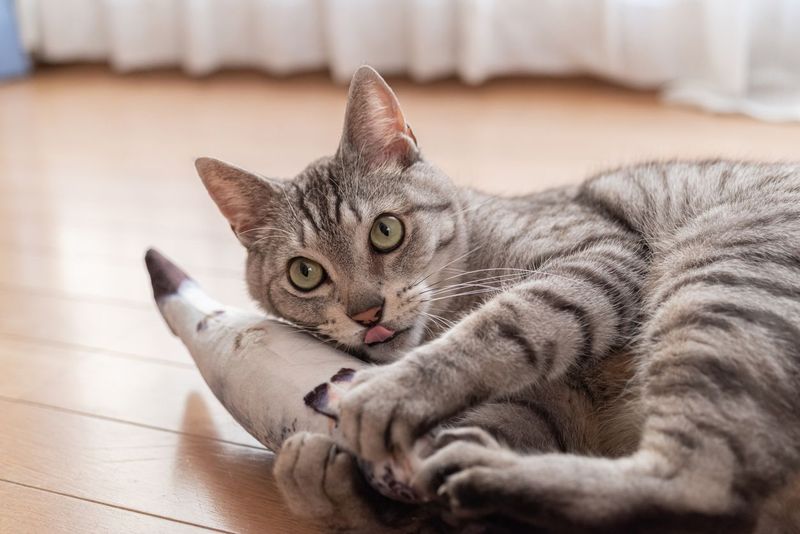
Engaging your cat in interactive play sessions is crucial for mental and physical well-being. Toys like feather wands, laser pointers, and puzzle feeders keep your cat entertained and stimulated.
Regular playtime helps burn off energy that might otherwise be directed towards undesirable behaviors.
These interactive sessions strengthen the bond between you and your cat, fostering a deeper connection. Remember, a tired cat is a happy cat, and playtime is an excellent way to achieve this indoors.
8. Respect Their Boundaries
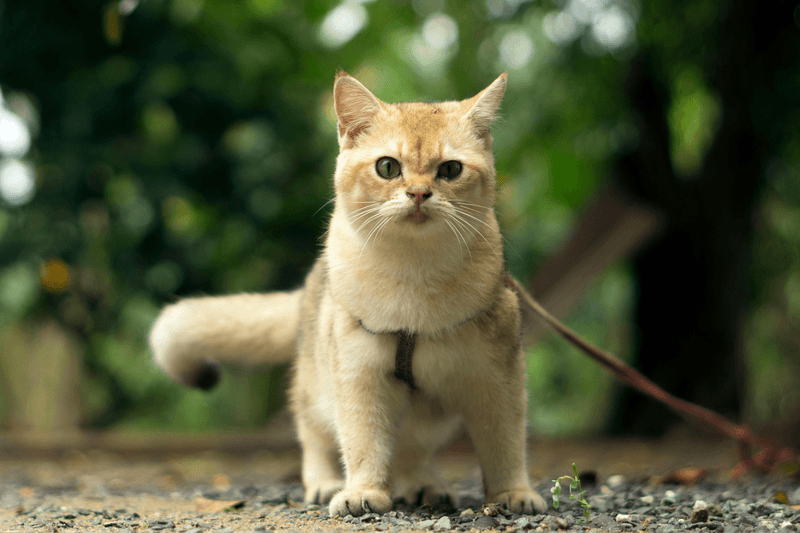
Cats, like humans, appreciate their personal space, and respecting this need is vital for a harmonious indoor life. Allow your cat to explore at their own pace, and avoid forcing interactions.
Acknowledging their boundaries fosters trust and reduces stress, making them more comfortable in their environment. Remember, patience is a virtue when it comes to building a bond with your feline friend.
By giving them space, you encourage them to approach you on their terms, strengthening mutual respect.
9. Start Slowly
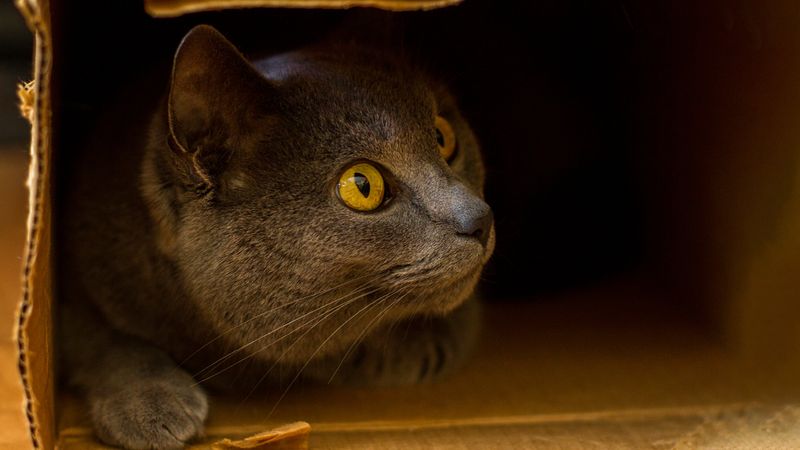
When introducing your cat to indoor life, patience is your best ally. Begin with brief, calm visits, gradually increasing their duration as your cat adjusts.
Positive reinforcement, such as treats and affection, can make these transitions smoother. Creating a positive association with indoor spaces helps your cat feel more at ease and less anxious about the change.
Remember, every cat is unique, and some may take longer to adapt. Embrace the journey, and give your cat the time they need.
10. Schedule A Vet Visit

Before making the big move indoors, schedule a comprehensive vet checkup. This visit ensures your cat is healthy and ready for their new indoor lifestyle.
It’s a chance to address any underlying health issues that might affect their transition. Regular health checks are crucial, as they also keep vaccinations up to date, protecting your cat from indoor hazards.
A clean bill of health will give you peace of mind as you welcome your feline friend into their new, cozy abode.
11. Litter Box Training

Introducing your cat to a litter box requires patience and encouragement. Start by placing the box in a quiet, accessible location, and keep it clean to entice your cat to use it.
Cats are naturally inclined to bury their waste, so with gentle guidance, they’ll quickly adapt to this indoor habit. Praise and treats can reinforce positive litter box behavior, making the transition smoother.
Remember, cleanliness is key—regular maintenance ensures your cat always has a welcoming bathroom space.
12. Make The Indoors Fun And Stimulating
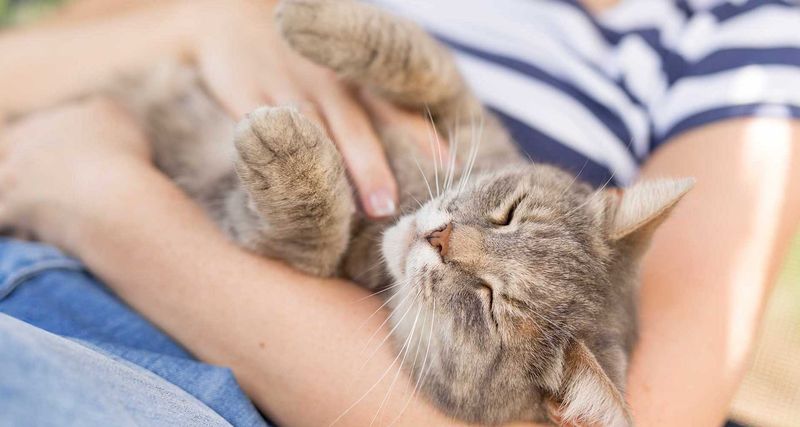
Transform your home into a feline playground by providing ample toys, scratching posts, and climbing structures. These elements cater to your cat’s natural instincts, offering mental and physical stimulation.
Keeping your cat entertained indoors prevents boredom and encourages healthy activity levels. By rotating toys and introducing new challenges, you keep their environment dynamic and engaging.
An enriched indoor space not only satisfies your cat’s curiosity but also promotes a joyful and active lifestyle.
13. Provide Hideaways For Alone Time
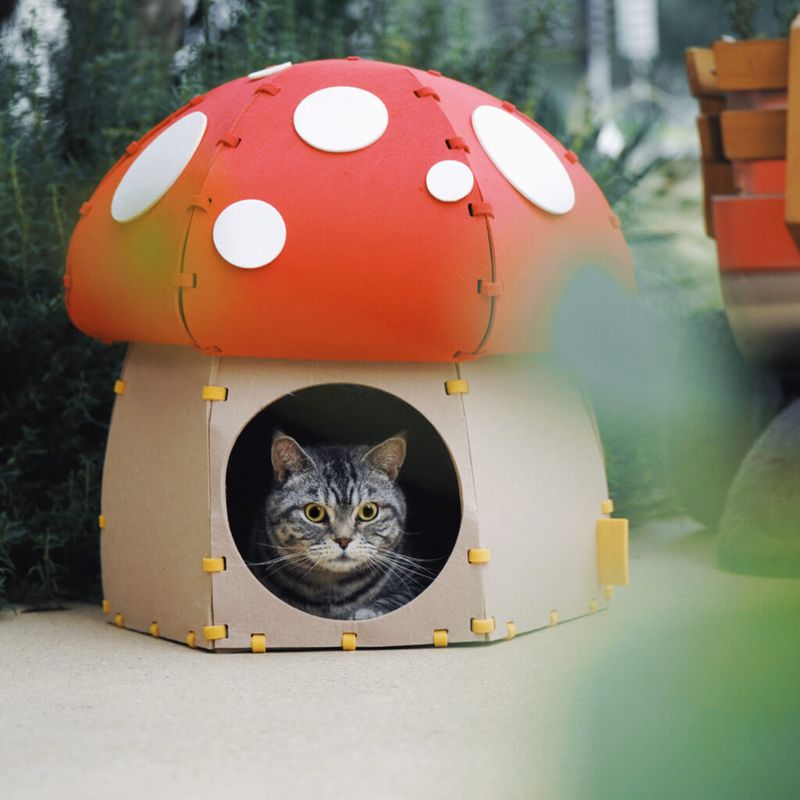
Cats cherish their alone time, and offering them cozy hideaways caters to this need. Provide various nooks, such as soft beds, boxes, or tunnels, where your cat can retreat and recharge.
These secluded spots offer comfort and security, especially during times of stress or fatigue.
By ensuring your cat has access to peaceful hideaways, you contribute to their overall well-being and happiness indoors. A well-rested cat is a content cat, ready to enjoy the comforts of home.
14. Keep Their Diet Consistent
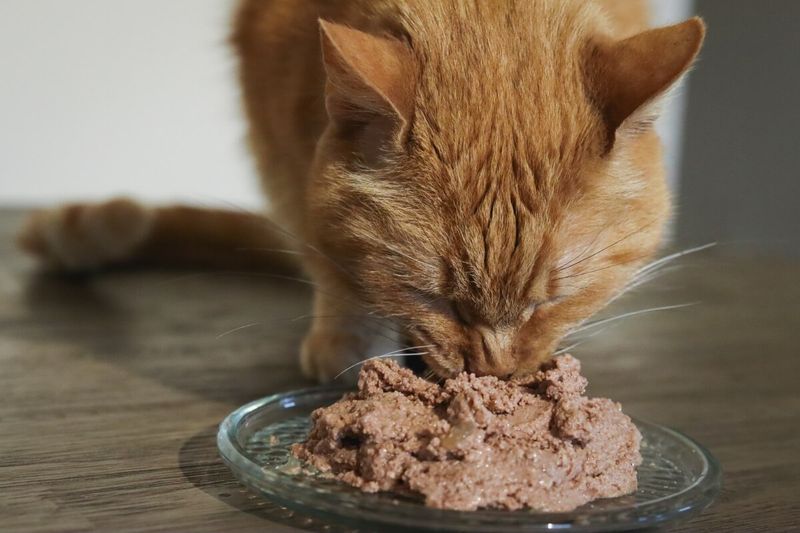
Transitioning to indoor life often involves dietary changes, but maintaining consistency is crucial.
Gradually introduce indoor-specific foods while keeping mealtime structured and engaging. A consistent diet helps prevent digestive issues and ensures your cat feels secure in their new environment.
Use feeding times as opportunities to bond, offering treats and affection as part of the routine. With a balanced diet and love, your cat will thrive indoors, enjoying each meal as part of their cozy new lifestyle.

